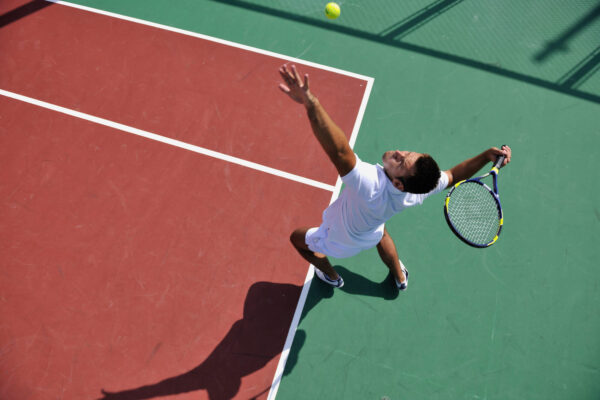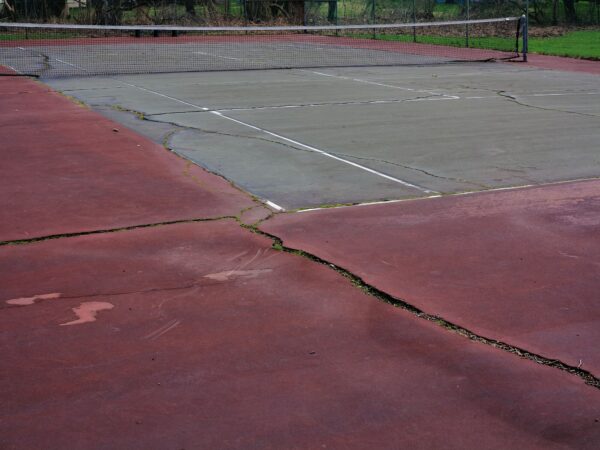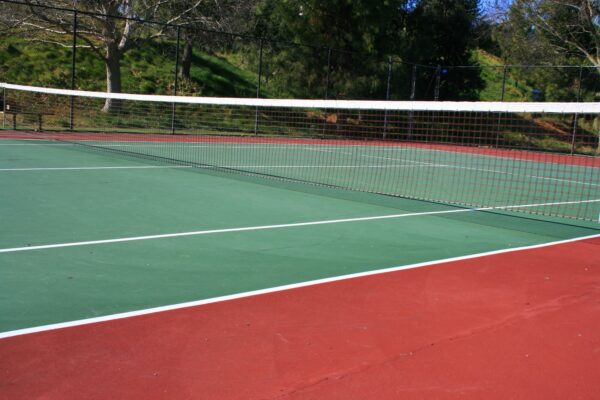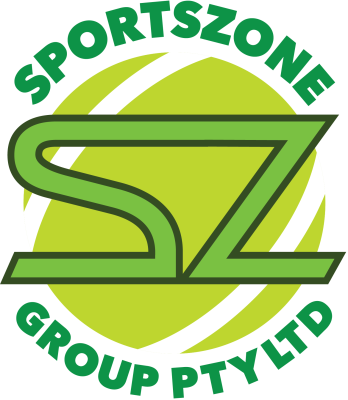
Picture the perfect game of tennis: swift movements, accurate serves, breathtaking volleys, all taking place on a flawlessly maintained court. The condition of the court plays a crucial role in enhancing the quality of the game and ensuring its longevity. Neglecting regular maintenance of your tennis court can lead to numerous problems, potentially reducing the lifespan of the court and impacting player safety. This blog post will delve into the importance of proper tennis court maintenance and offer practical solutions to common issues encountered.
The Importance of Regular Maintenance
Maintaining a tennis court is a substantial undertaking, but the rewards it brings are bountiful and enduring. Regular maintenance is crucial for various reasons. It helps to prevent unexpected injuries that could be caused by surface irregularities and deterioration. An uneven court can cause missteps or mishits, leading to twisted ankles or other player injuries. Consistent maintenance ensures that these irregularities are addressed promptly, safeguarding the wellbeing of all users.
A well-maintained court is a prerequisite for optimal playing conditions. The bounce and speed of a tennis ball can vary greatly depending on the court’s condition. A court in excellent condition guarantees consistent ball bounce and speed, enhancing the overall experience for players. It also helps in avoiding any unfair advantages or disadvantages during a game caused by court anomalies.
Regular upkeep significantly contributes to prolonging the lifespan of the court. Neglecting maintenance could lead to irreversible damage over time, significantly reducing the court’s service life. Regular maintenance, on the other hand, extends the court’s life, allowing it to retain its professional standards and appearance for years to come.
Beyond the immediate playability and longevity, a well-kept tennis court also has aesthetic and perceptual advantages. It reflects the pride and value you place on your facility. A clean, well-maintained court sends a strong message to players and spectators about your dedication to quality and professionalism. It creates an inviting atmosphere, encouraging players to frequent the court and enjoy the game.
Investing in regular maintenance can yield significant cost savings in the long run. Minor issues left unattended can develop into major problems, necessitating extensive repairs or even a complete court reconstruction. These major repair projects can be financially draining and can disrupt the availability of the court for an extended period. Regular maintenance helps you stay ahead of these issues, saving both time and money by addressing minor problems before they escalate.

Common Problems in Tennis Court Maintenance
Cracks and Surface Damage
Over time, every tennis court, regardless of how meticulously it’s maintained, is susceptible to cracks and surface damage. Numerous factors can contribute to the manifestation of these issues. For instance, harsh weather conditions such as heavy rain, snow, or extreme sun can cause contraction and expansion, leading to the appearance of unsightly cracks and fissures. The court surface can also suffer from varying temperatures that affect its elasticity, causing it to become brittle and susceptible to cracking.
Regular wear and tear from daily usage is another major contributor to surface damage. As players consistently run, pivot, and slide on the court, the surface can gradually wear down, leading to uneven spots, and eventually, noticeable cracks.
These imperfections can significantly impact the playability of the court. Cracks and surface damage can lead to inconsistent ball bounce and unpredictable changes in ball direction, creating potential challenges for players. Additionally, these surface abnormalities can pose safety risks to players, leading to stumbles or falls during the game.
Water Damage
Water, though seemingly harmless, is a silent but potent enemy of tennis courts. When a court is exposed to water for prolonged periods, especially stagnant water, it can gradually weaken the court’s surface. This exposure can lead to discolouration, giving the court an aged and neglected appearance. In more severe cases, prolonged water exposure can cause blistering or “bubbling” on the court surface, where water seeps into the layers of the court material causing it to lose its adhesion, creating small to large surface blisters.
In the absence of a proper drainage system, water can accumulate and seep into the sublayers of the court. This can lead to structural damage, destabilising the court base and causing it to become uneven or develop larger, more serious cracks.
Moss and Algae
Moss and algae growth is a common issue faced by many tennis court owners, especially in areas that are damp and shaded. These biological invaders can rapidly colonize a court, especially if the court isn’t regularly cleaned or if the surrounding environment encourages their growth.
Their presence on the court can cause several problems. For one, they can create slippery surfaces, posing significant safety risks to players who might lose their footing. Moss and algae can also lead to unsightly stains on the court surface, which can be difficult to remove and can degrade the overall aesthetics of the court.
If left unchecked, moss and algae can cause long-term damage to the court. Their growth can lead to the deterioration of the surface material, exacerbating cracks and other structural issues. Therefore, preventing and addressing moss and algae growth should be an integral part of any tennis court maintenance routine.

Preventive Measures and Solutions
Regular Resurfacing
Resurfacing is more than just a remedy for visible court damage; it’s a proactive measure aimed at maintaining optimal court conditions over the long term. Regular resurfacing involves the application of a new surface layer to the existing court, which helps to rectify minor cracks and surface irregularities, ensuring the surface remains level and smooth for optimal play.
Besides its restorative benefits, regular resurfacing enhances the court’s durability by adding a protective layer that guards against weather elements, UV radiation, and the physical strain from regular usage. This means less susceptibility to wear and tear, thus increasing the longevity of the court.
Additionally, resurfacing refreshes the court’s appearance. It gives the court a vibrant, new look, enhancing its appeal to players and spectators alike. A resurfaced court provides a sense of newness and professionalism, contributing to an elevated playing and viewing experience.
Effective Drainage Systems
An effective drainage system is a vital component of any tennis court, acting as a safeguard against the damaging effects of water. A sound drainage system ensures rapid evacuation of rainwater, avoiding water stagnation which could lead to structural damage and surface degradation.
Without proper drainage, water can seep into the court surface and its underlying layers, causing problems ranging from surface blistering to base destabilisation. Therefore, investing in a robust drainage system is key to preventing these issues.
If a court already exhibits signs of water damage, it’s advisable to consult a professional. They can help in assessing the effectiveness of your current drainage system and suggest necessary improvements. Regular inspection and maintenance of the drainage system are also crucial to ensure its functionality over time.
Regular Cleaning
When it comes to combating moss and algae growth, regular cleaning is an indispensable tool. This means more than just sweeping the court; it involves keeping the court free from fallen leaves, debris, and any other materials that can create a conducive environment for moss and algae to thrive.
In addition, using appropriate moss and algae treatments is a wise preventive measure. Such treatments can help eliminate these growths before they become a problem, preventing the associated safety hazards and potential long-term damage.
Regular cleaning extends beyond these specific treatments, though. It includes routine washing of the court surface to remove dirt and dust. Such practices help maintain the integrity and aesthetics of the court, ensuring a safe and enjoyable playing environment. Overlooking regular cleaning can lead to accelerated wear and degradation of the court surface, making this a vital part of preventive maintenance.
A well-maintained tennis court is a joy for players and a testament to the owner’s commitment to quality and safety. Regular maintenance helps in preventing cracks, water damage, and the growth of moss and algae, ultimately prolonging the life of the court. By taking proactive steps such as regular resurfacing, effective drainage, and routine cleaning, we can ensure our courts remain in optimal condition. So, let’s commit to regular maintenance and enjoy the game of tennis on a court that truly enhances the playing experience.
Disclaimer
This blog post provides general advice on tennis court maintenance. For specific issues, it’s always recommended to consult a professional tennis court construction and maintenance company.
